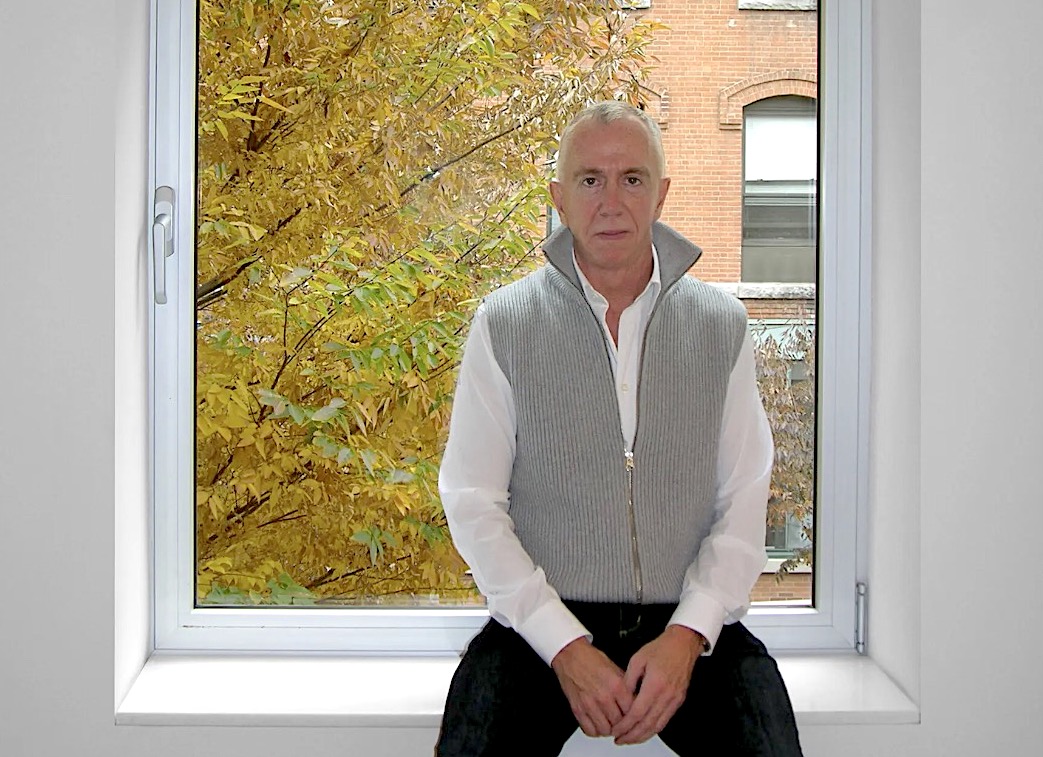Black Hands, White Cotton
2014 - Drawing & Print (Drawing & Print)
Hank Willis Thomas
Shot in black and white and printed on a glittery carborundum surface, Black Hands, White Cotton both confronts and abstracts the subject of its title. As with many of his works, the artist has taken a found image and manipulated it to draw out and dramatize the formal contrast between the black hands holding white cotton. Cotton, of course is one of the most familiar fabric sources to us, and becomes incredibly soft once processed. But at the time that it was being planted and picked by slaves in the United States, was severely abrasive and would lacerate the hands of the slaves dramatically. Not to mention the physical labor involved in picking cotton out in the sweltering hot fields for inhumane periods of time, and the frequent physical abuse endured by slaves in the process. This image, culled from the archives of Jive magazine in San Francisco, and blown up to a pixelated scale therefore demands not only that we confront the history of slavery and racism in the US, but does so by presenting a formal contradiction of a material that appears seductive, glamorous, and ornamental, but of a subject that represents extreme violence and oppression.
Employing the visual language and terminology of mass media, and appropriating symbols and images from popular culture, Hank Willis Thomas’ work seeks to question and subvert established definitions and positions with regards to personal identity and the narrative of race. Working across installation, photography, video, and media work, Thomas maintains his photo conceptualist roots, primarily taking source material from found photographs and archives. These images form the basis from which the artist seeks to uncover the fallacies that history claims as truth. His work illustrates how the way history is represented and consumed reinforces generalizations surrounding identity, gender, race and ethnicity, and that as an artist he has an opportunity to expose or to revise those histories from the points of view of the oppressed.
Colors:
Related works of genres: » born 1976, » california college of the arts alumni, » contemporary artist, » conceptual artist, » african-american photographers

© » KADIST
Paul McCarthy
1983McCarthy’s Mother Pig performance at Shushi Gallery in 1983 was the first time he used a set, a practice which came to characterize his later works...

© » KADIST
Sebastián Díaz Morales
2014In Suspension a young man is hanging in the air, falling, or perhaps drifting through time and space...

© » KADIST
Raymond Pettibon
2000The five works included in the Kadist Collection are representative of Pettibon’s complex drawings which are much more narrative than comics or cartoon...

© » KADIST
Raymond Pettibon
2005The five works included in the Kadist Collection are representative of Pettibon’s complex drawings which are much more narrative than comics or cartoon...

© » KADIST
Raymond Pettibon
2005The five works included in the Kadist Collection are representative of Pettibon’s complex drawings which are much more narrative than comics or cartoon...

© » KADIST
Toyin Ojih Odutola
2015As she traces the same shape again and again, Ojih Odutola’s lines become darker and deeper, sometimes pushed to the point where their blackness becomes luminous...

© » KADIST
Harrell Fletcher
2005The American War , which takes its title from the Vietnamese term for what Americans call the Vietnam War, has toured the United States extensively with the goal of presenting a Vietnamese perspective of that history...

© » KADIST
Laure Prouvost
2018Monteverdi Ici – Deeply, Feeling Filling the World by Laure Prouvost is a tapestry that references a video by the artist entitled Monteverdi Ici (2018)...

© » KADIST
Martin Kippenberger
1989Untitled is a work on paper by Martin Kippenberger comprised of several seemingly disparate elements: cut-out images of a group of dancers, a japanese ceramic vase, and a pair of legs, are all combined with gestural, hand-drawn traces and additional elements such as a candy wrapper from a hotel in Monte Carlo and a statistical form from a federal government office in Wiesbaden, Germany...

© » KADIST
Luke Butler
2008In Captain X , Star Trek’s Captain Kirk, played by William Shatner, is limply draped over a large boulder in what looks like a hostile alien environment...

© » KADIST
Harun Farocki
2009For Immersion , Harun Farocki went to visit a research centre near Seattle specialized in the development of virtual realities and computer simulations...

© » KADIST
Robert Therrien
1985In No Title (Blue Chapel) Therrien has reduced the image of a chapel to a polygon...

© » KADIST
Cildo Meireles
1975Meireles, whose work often involves sound, refers to Sal Sem Carne (Salt Without Meat) as a “sound sculpture.” The printed images and sounds recorded on this vinyl record and it’s lithographed sleeve describe the massacre of the Krahó people of Brazil...

© » ARTLYST
Kara Walker
Brent Sikkema, the Manhattan art dealer renowned for representing artists such as Jeffrey Gibson and Kara Walker found dead The post Brent Sikkema – Visionary Art Dealer Of Jeffrey Gibson And Kara Walker Murdered appeared first on Artlyst ....

© » KADIST
Francis Alÿs
2006This series of small drawings is executed with varying materials—pen, ink, colored pencil, charcoal, and masking tape—on architect’s tracing paper...

© » KADIST
Laure Prouvost
2017The Parle Ment Metal Woman Welcoming You is a character originated from a series of works combining sculpture and video with a specific role— lying on the floor playing a romantic elevator tune, this Metal Woman welcomes and flirts with viewers in the space where she is posed...




